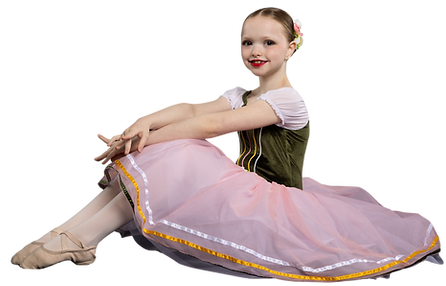Meet the Sleeping Beauty Fairies
- Principal
- Feb 2, 2021
- 3 min read
Have you met the Sleeping Beauty Fairies?
Most people are familiar with the tale of Sleeping Beauty, which has been around for centuries and retold many times. Sleeping Beauty is about a princess who pricks her finger on a spindle and falls into a deep sleep, only to be awakened by true love’s kiss (incidentally, the whole castle sleeps and wakes with her). In most Sleeping Beauty ballets, there are six good fairies, and each fairy presents the princess with a gift.
The first fairy is known as the Crystal Fountain Fairy. She is also known as the Fairy of Grace or Candide Fairy. As her name suggests, she gives the gift of purity and honesty, sincerity, and integrity. She typically wears pastels, pale gold, silver or white.
The second fairy is Enchanted Garden Fairy. She is called Fleur de farine, which translates to “wheat flower”. Traditionally, her gift is the gift of beauty, since wheat flowers were made into a face powder to add beauty. She is also called the Fairy of Grace or Fairy of Joy. At ACBA, she is commonly called the Party Fairy because music is upbeat and the variation is danced with enthusiasm in a brightly colored tutu.
The Fairy of the Woodland Glade is the third fairy or Miettes qui tombent, which literally means “falling breadcrumbs”. In traditional Russian culture, bread is a symbol of welcome, fertility, and good fortune. Breadcrumbs are placed in a baby's cradle as a blessing. Her tutu is typically earth tones. She is the embodiment of generosity therefore, she gives the gift generosity.
The fourth fairy is the Fairy of Songbirds or Singing Canary Fairy, or the Canari qui chante. She is commonly called the Canary Fairy and wears bright yellow. Unsurprisingly, her gift is a lovely, melodious voice. Fun Fact - The variation order is symbolic… The Enchanted Garden (second fairy), Woodland Glade (third fairy) and Songbird (fourth fairy) are in a that order because wheat flowers leads to falling breadcrumbs, which attracts songbirds.
The fifth fairy is the Fairy of Golden Vine, most commonly called the Finger Fairy because her variation is performed with pointing index fingers. Incidentally, the variation was choreographed the year electricity was discovered, and her fingers are thought to represent the“zap” of electricity. She is also known as Violente (force) or the Fairy of Temperament. Oddly, she is also known as the Humming-bird Fairy sometimes. There has been a lot of confusion as to what her gift really is. Passion and temperament are just two of the most commonly mentioned gifts. Some say she is giving the gift of having a backbone. She typically wears red or gold or a combination of the two.
Last but not least, is the Lilac Fairy. In Russian folklore, lilac symbolises wisdom, and it is not uncommon to tuck a sprig of lilac inside babies’ cradles. The Lilac Fairy retains her name in most ballets. She is the queen of the fairies. She moves with imperial grace. She wears, you guessed it, lilac. The Lilac Fairy is supposed to give the gift of wisdom to Princess Aurora but before she could the evil fairy curses the Princess so instead the Lilac Fairy counteracts the evil fairy’s curse.
We'd hate to repeat Catalabutte's catastrophic mistake and leave out Carabosse, the Fairy of Wisdom or Revenge. She's not part of the christening variations, but the plot of Sleeping Beauty hinges on the wrath of the vengeful villain, who's is so insulted at not being invited to Princess Aurora's christening. She crashes the party and curses the young princess to prick her finger on a spindle and die on her 16th birthday before storming off in a glorious rage.





